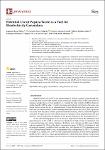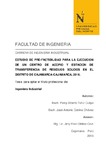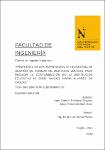Mostrar el registro sencillo del ítem
Potential use of papaya waste as a fuel for bioelectricity generation
| dc.contributor.author | Rojas Flores, Segundo | |
| dc.contributor.author | Pérez Delgado, Orlando | |
| dc.contributor.author | Nazario Naveda, Renny | |
| dc.contributor.author | Rojales Alfaro, Henry | |
| dc.contributor.author | Benites, Santiago M. | |
| dc.contributor.author | De La Cruz Noriega, Magaly | |
| dc.contributor.author | Otiniano, Milly Nélida | |
| dc.date.accessioned | 2023-10-17T00:16:01Z | |
| dc.date.available | 2023-10-17T00:16:01Z | |
| dc.date.issued | 2021-10-11 | |
| dc.identifier.citation | Rojas, S., Pérez, O., Nazario, R., Rojales, H., Benites, S., De La Cruz, & Otiniano, M. (2021). Potential use of papaya waste as a fuel for bioelectricity generation. Processes, 9, 1-11. https://doi.org/10.3390/pr9101799 | es_PE |
| dc.identifier.other | . | es_PE |
| dc.identifier.uri | https://hdl.handle.net/11537/34506 | |
| dc.description.abstract | Papaya (Carica papaya) waste cause significant commercial and environmental damage, mainly due to the economic losses and foul odours they emit when decomposing. Therefore, this work provides an innovative way to generate electricity for the benefit of society and companies dedicated to the import and export of this fruit. Microbial fuel cells are a technology that allows electricity generation. These cells were produced with low-cost materials using zinc and copper electrodes; while a 150 mL polymethylmethacrylate tube was used as a substrate collection chamber (papaya waste). Maximum values of 0.736 0.204 V and 5.57 0.45 mA were generated, while pH values increased from 3.848 to 8.227 0.35 and Brix decreased slowly from the first day. The maximum power density value was 878.38 mW/cm2 at a current density of 7.245 A/cm2 at a maximum voltage of 1072.77 mV. The bacteria were identified with an identity percentage of 99.32% for Achromobacter xylosoxidans species, 99.93% for Acinetobacter bereziniae, and 100.00% for Stenotrophomonas maltophilia. This research gives a new way for the use of papaya waste for bioelectricity generation. | es_PE |
| dc.format | application/pdf | es_PE |
| dc.language.iso | spa | es_PE |
| dc.publisher | MDPI (Multidisciplinary Digital Publishing Institute) | es_PE |
| dc.rights | info:eu-repo/semantics/openAccess | es_PE |
| dc.rights.uri | https://creativecommons.org/licenses/by-nc-sa/3.0/us/ | * |
| dc.source | Universidad Privada del Norte | es_PE |
| dc.source | Repositorio Institucional - UPN | es_PE |
| dc.subject | Bioelectricidad | es_PE |
| dc.subject | Papaya | es_PE |
| dc.subject | Waste | es_PE |
| dc.subject | Microbial fuel cells | es_PE |
| dc.subject | Generation | es_PE |
| dc.subject | Electricity | es_PE |
| dc.title | Potential use of papaya waste as a fuel for bioelectricity generation | es_PE |
| dc.type | info:eu-repo/semantics/article | es_PE |
| dc.publisher.country | PE | es_PE |
| dc.identifier.journal | Processes | es_PE |
| dc.description.peer-review | Artículo científico | es_PE |
| dc.subject.ocde | https://purl.org/pe-repo/ocde/ford#2.02.01 | es_PE |
| dc.description.sede | Trujillo El Molino | es_PE |
| dc.identifier.doi | https://doi.org/10.3390/pr9101799 |






